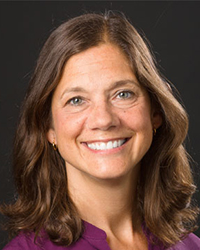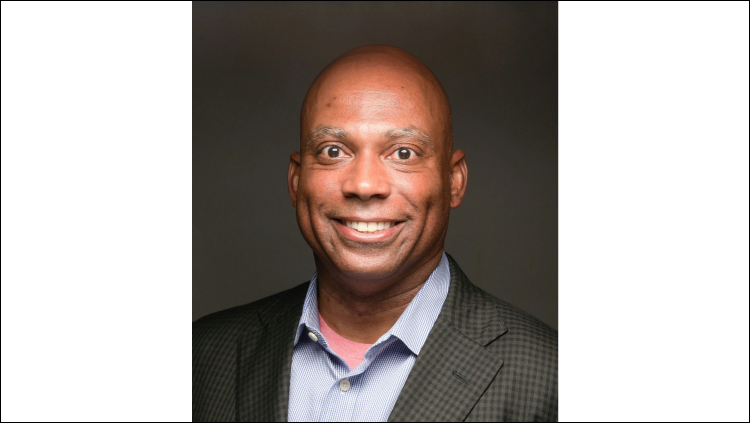Message From the President: Professional Success

Marina Picciotto
As I step into the role of SfN president, I feel like the kid who started in the basement mail room, did every job on every floor in the building, and has now made it to the top. I have to say, it’s pretty cool!
I first heard of SfN when I was an undergraduate researcher in a neuroscience lab. Every graduate student I knew was preparing to present at the annual meeting in San Diego that year (using Letraset to make their figures — those of you born after 1980 will have to look that up 😊.) I was incredibly jealous and promised myself that I would attend SfN one year. That year came when I was writing my PhD thesis, which turned out to be an excellent time to explore the Poster Hall, where I found all the sources I could ever need for the Background section of my dissertation. My next SfN annual meeting was early in my postdoc when I was still trying to figure out my project on mouse nicotinic acetylcholine receptors; I found a lab with an entire row of posters on the topic and made contacts with peers who are still colleagues today. Then, when I was applying for academic positions, I attended the annual meeting in Miami where — despite a hurricane — I was able to meet people who might end up looking at my job applications.
SfN has done a lot for my career, and I have tried to repay the Society through service.
I’ve attended every SfN meeting since, taking as many trainees as I can with me. Together, we look for new ideas, ensure the lab’s projects are up to date, learn new techniques, see what’s being done by others, identify ways to make our work stronger, and build our network of colleagues and potential collaborators.
SfN has done a lot for my career, and I have tried to repay the Society through service. As someone who has a hard time saying “no,” I began as a frequent reviewer for JNeurosci. Many (on time) reviews later, I was asked to step into the role of associate editor, then reviewing editor, then senior editor. An invitation to Program Committee followed, where I heard Eve Marder’s powerful push for inclusion in all aspects of the committee’s efforts.
My first big leadership role was to serve as Program Committee chair for then-SfN President Tom Carew. I learned more about leadership in that role than in most aspects of my university career, including how to listen to many points of view and try to bring people toward consensus. For example, during my time on Program Committee, the annual meeting held sessions called “slide talks.” From my perspective, these sessions felt like a mishmash of things that fell together but weren’t really coherent. When I pushed to get rid of the slide talks all together, other Program Committee members spoke up and said that short slide talks were the only reason they attended the annual meeting! It was suddenly clear that my SfN meeting is not someone else’s meeting, and that changing the meeting to fit my opinion could ruin someone else’s experience. Over that year, we reached consensus by creating the nanosymposium sessions (a term suggested by Eve Marder) that are a mainstay of the annual meeting today.
It was suddenly clear that my SfN meeting is not someone else’s meeting, and that changing the meeting to fit my opinion could ruin someone else’s experience.
Following service on the Program Committee, I was elected to terms on SfN Council (including treasurer), editor-in-chief of JNeurosci, and now president, where I get to help ensure that SfN’s initiatives will support every member’s personal and professional development. Fortunately, SfN is already doing well in this regard, as exemplified by the 96% of Neuroscience 2023 attendees who said the annual meeting met or exceeded expectations. There was feedback on improving accessibility for virtual attendees, and SfN will incorporate that feedback as we plan for Neuroscience 2024.
Unlike the hurricane I experienced in Miami, which only affected a single annual meeting, the pandemic cancelled or battered three annual meetings.
Outside of the annual meeting, SfN is responding to two long-term trends that will play a role in the Society’s longevity. First, the pandemic made clear that some crises that impact SfN’s finances can last for several years. Unlike the hurricane I experienced in Miami, which only affected a single annual meeting, the pandemic cancelled or battered three annual meetings. Therefore, SfN has adjusted its Reserve Strategy to ensure the Society has the assets necessary to cover multiple years of expected liabilities. Second, it is increasingly common for members of the neuroscience community to find careers outside of academia. SfN has traditionally focused on serving neuroscientists in academic jobs, and much of the Society is structured around academic researchers. To ensure that SfN has something to offer every neuroscientist — regardless of where they work — Council has formed a working group to evaluate the Society’s individual membership categories, nomenclature, definitions, new member application requirements, and benefit access.
Reflecting back on 30 years (!) as a member and multiple roles as a volunteer, I am confident that without SfN, I would not have the professional success and personal development I have had the incredible luck to enjoy. I look forward to working with you to provide similar opportunities to the entire membership before, during, and long after Neuroscience 2024.


















